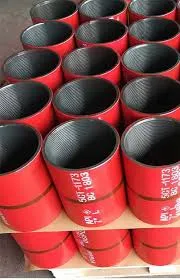- Afrikaans
- Albanian
- Amharic
- Arabic
- Armenian
- Azerbaijani
- Basque
- Belarusian
- Bengali
- Bosnian
- Bulgarian
- Catalan
- Cebuano
- Corsican
- Croatian
- Czech
- Danish
- Dutch
- English
- Esperanto
- Estonian
- Finnish
- French
- Frisian
- Galician
- Georgian
- German
- Greek
- Gujarati
- Haitian Creole
- hausa
- hawaiian
- Hebrew
- Hindi
- Miao
- Hungarian
- Icelandic
- igbo
- Indonesian
- irish
- Italian
- Japanese
- Javanese
- Kannada
- kazakh
- Khmer
- Rwandese
- Korean
- Kurdish
- Kyrgyz
- Lao
- Latin
- Latvian
- Lithuanian
- Luxembourgish
- Macedonian
- Malgashi
- Malay
- Malayalam
- Maltese
- Maori
- Marathi
- Mongolian
- Myanmar
- Nepali
- Norwegian
- Norwegian
- Occitan
- Pashto
- Persian
- Polish
- Portuguese
- Punjabi
- Romanian
- Russian
- Samoan
- Scottish Gaelic
- Serbian
- Sesotho
- Shona
- Sindhi
- Sinhala
- Slovak
- Slovenian
- Somali
- Spanish
- Sundanese
- Swahili
- Swedish
- Tagalog
- Tajik
- Tamil
- Tatar
- Telugu
- Thai
- Turkish
- Turkmen
- Ukrainian
- Urdu
- Uighur
- Uzbek
- Vietnamese
- Welsh
- Bantu
- Yiddish
- Yoruba
- Zulu
Effective Solutions for Irrigation Pipe Coupling and Connection in Agricultural Practices
Understanding Irrigation Pipe Couplings Essential Components for Efficient Water Management
Irrigation is a crucial component of agriculture, ensuring that crops receive the necessary water for growth and productivity. One key aspect of an irrigation system is the use of pipe couplings, which play a vital role in connecting various sections of piping and facilitating a seamless flow of water. This article explores the importance of irrigation pipe couplings, their various types, and their application in ensuring efficient water management in agricultural practices.
The Importance of Pipe Couplings in Irrigation
Irrigation systems can vary greatly in size and complexity, from small garden setups to large agricultural operations. Regardless of the scale, pipe couplings are integral to the effective functioning of these systems. They allow for modifications, repairs, and extensions of the irrigation network, enabling farmers and landscapers to manage water distribution according to the specific needs of their crops.
Effective water management is critical as it directly influences crop yields, resource conservation, and operational costs. Poorly connected pipes can lead to leaks, water wastage, and uneven water distribution, all of which can significantly affect crop health and productivity. Thus, choosing the right type of coupling and ensuring its proper installation is paramount for maintaining an efficient irrigation system.
Types of Irrigation Pipe Couplings
There are several types of irrigation pipe couplings available, each designed for different materials and applications. The most common types include
1. Compression Couplings These are often used for connecting polyethylene pipes. They provide a secure and leak-free connection that can be easily installed without special tools.
2. Slip Couplings These couplings allow for easy alignment of pipes and are often used in situations where a slight offset may occur in the pipeline.
irrigation pipe coupling

4. Push-Fit Couplings These couplings require no tools for installation and are ideal for quick repairs and extensions of existing irrigation systems, especially for PVC pipes.
5. Flanged Couplings Used primarily in industrial applications, flanged couplings provide a robust connection for large diameter pipes, making them suitable for high-pressure systems.
Application and Installation
Choosing the right coupling depends on the type of piping material, pressure requirements, and the specific application of the irrigation system. Proper installation is crucial to ensure a leak-free operation; this typically involves cutting the pipe cleanly, deburring the edges, and following the manufacturer’s instructions for securing the coupling.
Regular maintenance and inspection of couplings are also necessary to detect any signs of wear or damage early. This proactive approach helps prevent system failures that can lead to significant water loss or crop damage.
Conclusion
In conclusion, irrigation pipe couplings are pivotal in the efficient management of water resources in agricultural settings. By connecting various segments of piping, they facilitate the smooth and effective distribution of water essential for crop growth. Understanding the different types of couplings and their appropriate applications allows farmers and landscapers to optimize their irrigation systems, ultimately enhancing crop yields and conserving valuable water resources. As we continue to face challenges related to climate change and water scarcity, the importance of efficient irrigation systems, supported by reliable pipe coupling solutions, cannot be overstated. Investing in quality couplings is an investment in sustainable agricultural practices.
-
Tubing Pup Joints: Essential Components for Oil and Gas OperationsNewsJul.10,2025
-
Pup Joints: Essential Components for Reliable Drilling OperationsNewsJul.10,2025
-
Pipe Couplings: Connecting Your World EfficientlyNewsJul.10,2025
-
Mastering Oilfield Operations with Quality Tubing and CasingNewsJul.10,2025
-
High-Quality Casing Couplings for Every NeedNewsJul.10,2025
-
Boost Your Drilling Efficiency with Premium Crossover Tools & Seating NipplesNewsJul.10,2025







